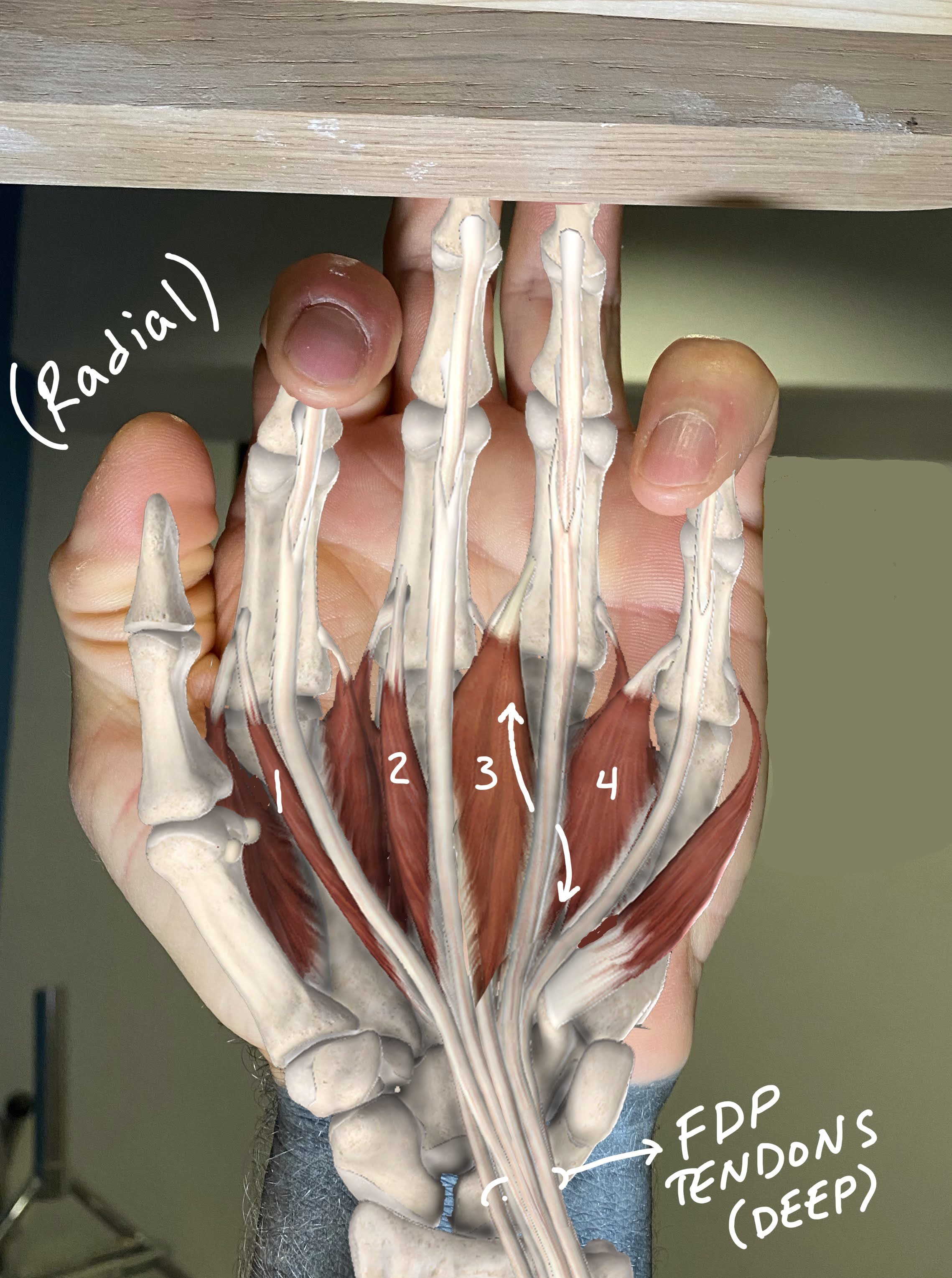Resources for Finger Injury Rehab
Disproportionately, when climbers only use a flat edge with a fixed depth, the middle two fingers take most of the stress.
It’s common to experience pain on a large edge with compression to the tendon sheath and A4 pulley.
I’m psyched that more climbers are getting into weight training to supplement their health. The downside is the additional load on the fingers.
At some point, a climber’s finger joints start looking less symmetric side-to-side. Why?
Please stop scraping with a tool, or rolling over it with a ring. Those are truly useless.
Climbing on small holds requires leverage, and multiple factors define leverage for an individual.
When we talk about 'active positions' in climbing, we're referring to grips like the half and full crimp.
If you have been climbing for a while, it's easy to understand that hanging below slopers uses much more friction than on other hold types.
The Struggle Climbing Show asks Tyler about common pitfalls and shares tips for Beginner, Intermediate, and Advanced climbers to level up their power.
Understand the testing methods for finger strength, power, and how to improve what is holding you back from sending your project.
Have you had the experience that not climbing made your fingers just as sore as loading them? This is due to the anatomy and mechanics of the synovial joint.
We all know that training volume is risky, but are there guidelines for what these athletes "shouldn't" do? That is a trickier question.
The A2 is the most commonly ruptured pulley in adult climbers (not kids) and is NOT common in other sports.
The A3 pulley can tolerate more abuse than the A2 and A4 because of its attachment point (the volar plate).
A common mistake in the climbing world is the assumption that finger boarding, rope climbing, limit bouldering, campusing, etc., all result in the same type of fatigue. Now we know this not to be true.
Getting coordinated at finger extension exercises will never transfer to rock climbing. We want recruitment, not random skills.
Easy climbing is one of the most common mistakes I see climbers make with PIP joint pain, especially when the pain is in the middle and ring finger.
Tape use has nuance, especially with injuries. Regarding pulley injuries, it reduces stress while re-introducing loads. But reducing stress to prevent an injury doesn’t make sense.
One of the important keys to successful rehab is consistency. Loads, directions, velocities, and tut need to be reproducible. If not, the feedback from loading isn’t accurate.
The PIP joint accounts for 85% of the motion for grip strength— but it’s commonly injured in climbers.
Lack of symptoms doesn’t mean you’re healed, and pain doesn’t mean the worst. Symptoms don’t tell us everything— just take a look at these images.
Our hands are not beautiful. Swollen joints, thickened skin, crooked digits etc. That’s the life of a climbers hand. Something people don’t consider is why it actually happens.
Have you ever wondered why you can’t produce as much force through your fingers as others? You put in the work, do the right things, and still can’t reach that same intensity. Here’s why.


























